The violin is an instrument that has had a tremendous impact on the music. It was widely used in classical works, where its flowing gentle sound came in handy. Folk art also noticed this beautiful instrument, although it appeared not so long ago, but managed to take its place in ethnic music. The violin is compared with a human voice, as its sound is fluid and diverse. Its shape resembles a female silhouette, which makes this instrument lively and animated. Today, not everyone is well aware of what a violin is. Let's fix this annoying situation.
The story of the appearance of the violin
The violin owes its appearance to many ethnic instruments, each of which influenced it. Among them, one can distinguish the British crotte, the Armenian bambir and the Arab rebab. The design of the violin is by no means new; many eastern peoples have been using such instruments for centuries, playing folk music on them to this day. The viola acquired its current form in the 16th century, when its production was put on stream, great masters began to appear, creating unique tools. Especially many such craftsmen were in Italy, where the traditions of creating violins are still alive.
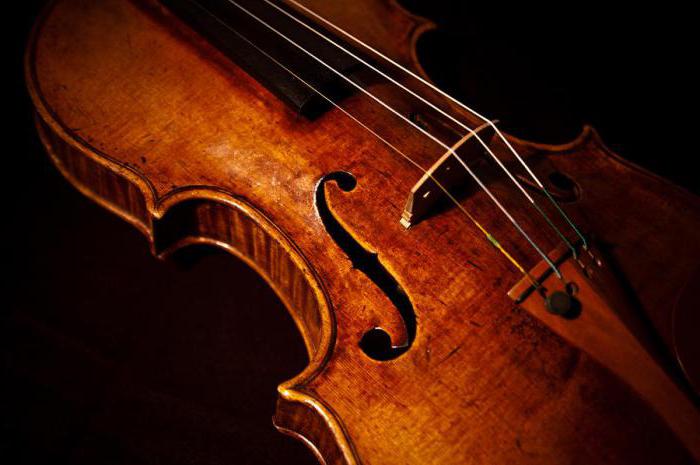
Since the 17th century, playing the violin began to take on a modern form. It was then that the compositions appeared, which are considered to be the first works written specifically for this gentle instrument. This is Romanesca per violino solo e basso, created by Biagio Marini and Capriccio stravagante, written by Carlo Farina. In subsequent years, violin masters began to appear like mushrooms after rain. Especially in this regard, Italy distinguished itself, which generated the greatest number of great violinists.
How the violin works
The violin received its soft and deep sound due to its unique design. It can distinguish 3 main parts - this is the head, neck and body. The combination of these details allows the instrument to make those bewitching sounds that brought him worldwide fame. The largest part of the violin is the body on which all other parts are attached. It consists of two decks connected by shells. Decks are made from different types of wood in order to achieve the most pure and beautiful sound. The upper part is most often made of spruce, while the lower part uses maple, sycamore or poplar.
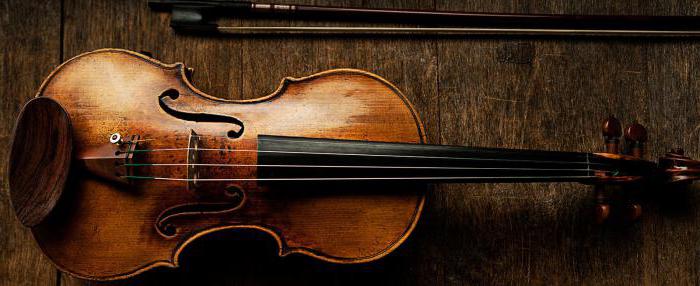
While playing the violin, the upper deck resonates with the rest of the instrument, creating a sound. In order for her to be lively and sonorous, she is made as thin as possible. On expensive master violins, the thickness of the top deck can be only a couple of millimeters. The lower deck is usually thicker and stronger than the upper, and the tree from which it is made is selected so that it fits the shells connecting both decks together.
Shells and darling
Shells are the sides of the violin located between the upper and lower decks. They are made from the same material as the lower deck. Moreover, often for these parts, wood from the same tree is used, carefully selected according to the texture and pattern. This design holds not only on glue, but also on small blocks that increase its strength. They are called clotz and are located inside the hull. Also inside is a bass beam that transmits vibrations to the body and gives extra rigidity to the top deck.
On the case of the violin there are two cutouts in the form of the Latin letter f, which are called aeths. Not far from the right cutout is one of the most important parts of the instrument - the darling. This is a small wooden beam that serves as a spacer between the upper and lower decks and transmits vibration. The darling got its name from the word "soul", which hints at the importance of this small detail. The masters noticed that the position, size and material of the darling seriously affect the sound of the instrument. Therefore, only an experienced violin manufacturer can properly position this small but important part of the case.
Tailpiece
The story about the violin and its construction will be incomplete if you do not mention such an important element as a wire holder, or sub-sections. Previously, it was cut out of wood, but today plastic is increasingly used for these purposes. It is the holder that secures the strings to the desired height. Also, cars are sometimes located on it, making tool tuning much easier. Before their appearance, the violin was tuned exclusively by pegs, with the help of which it is very difficult to make fine tuning.
The subheadings are kept on the button inserted into the hole on the body from the side opposite the fingerboard. This design is constantly under heavy load, so that the hole should ideally fit the button. Otherwise, the shell may crack, turning the violin into a useless piece of wood.
Vulture
The neck of the violin is glued to the front of the case, under which is the musician’s hand during the game. A neck is attached to the neck - a rounded surface made of hard wood or plastic, to which the strings are pressed. Its shape is thought out so that the strings do not interfere with each other when playing. In this case, a stand helps him, lifting the strings above the bar. Slots for strings are made on the stand, which you can make yourself, to your taste, as the new stands are sold without slots.
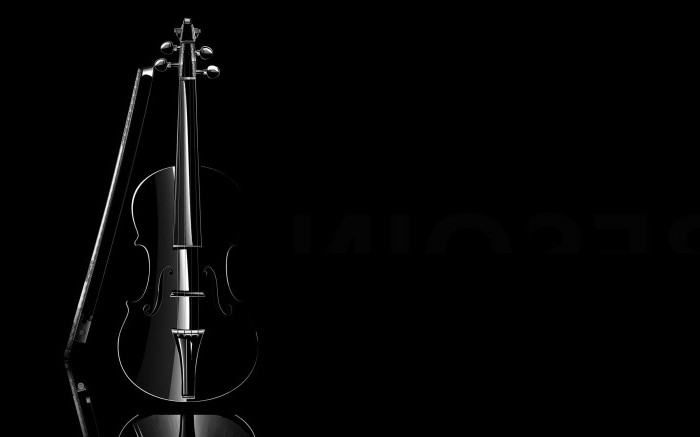
Also, grooves for strings are present on the nut. It is located at the very end of the neck and separates the strings from each other before they fall into the ring box. It contains pegs that serve as the main instrument for tuning the violin. They are simply inserted into wooden holes and are not fixed by anything. Thanks to this, the musician can adjust the progress of the spikes to his needs. You can make them tight and unyielding by slightly pushing during setup. Or vice versa, remove the choppers so that they move more easily, but they hold the line worse.
Strings
What is a violin without strings? A beautiful, but useless piece of wood that is suitable only for hammering nails with it. The strings are a very important part of the instrument, since its sound depends on them in many respects. Particularly important is the role of the material from which this small but significant part of the violin is made. Like everything in our world, strings develop and absorb the best gifts of the technogenic era. However, their original material can hardly be called high-tech.
Oddly enough, sheep’s intestines are what the ancient musical violin owes its gentle sound. They were dried, processed and tightly twisted to subsequently get a string. For a long time, the craftsmen kept secret the material used in string production. Products from sheep’s intestines gave a very soft sound, but wore out quickly and required frequent tuning. Today you can also find similar strings, but much more popular are modern materials.
Modern strings
Today, sheep’s intestines are at the complete disposal of their owners, as vein strings are rarely used. They were replaced by high-tech metal and synthetic products. Synthetic strings sound close to their veined predecessors. They also have a rather soft and warm sound, but are devoid of the drawbacks that their natural “colleagues” possess.
Another type of string is steel, which is made of all kinds of non-ferrous and precious metals, but most often from their alloys. They sound bright and sonorous, but lose in softness and depth. Such strings are suitable for many classic pieces that require clarity and brightness. They also hold the line for a long time and are quite durable.
Violin. Long way
Over the long years of its existence, the violin has become popular all over the planet. Classical music was especially famous for this wonderful instrument. The violin can brighten up any work, many composers gave it a leading role in their masterpieces. Everyone knows the immortal works of Mozart or Vivaldi, in which a lot of attention was paid to this chic instrument. But over time, the violin became a relic of the past, the lot of a narrow circle of connoisseurs or musicians. Electronic sound has supplanted this instrument from popular music. Smooth flowing sounds are gone, giving way to a vigorous and primitive bat.
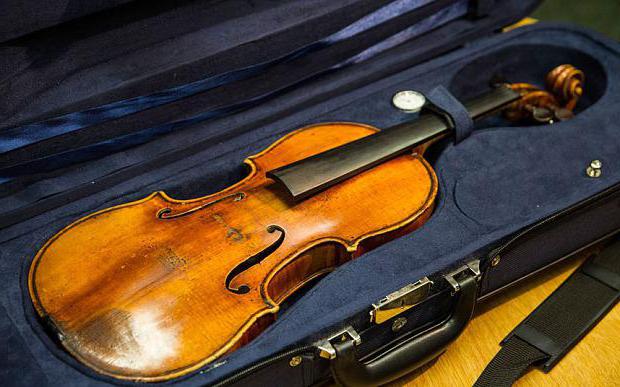
Fresh notes for the violin were usually written only to accompany the films, new songs for this instrument appeared only among folk artists, but their sound was pretty monotonous. Fortunately, in recent years there have been many bands performing modern music with the participation of the violin. The audience is tired of the monotonous love howls of another pop star, opening his heart to deep instrumental music.
Violin fox
A funny story placed the violin in the song of the famous musician - Igor Sarukhanov. Once he wrote a composition, which he planned to call "The creaking of the wheel." However, the work turned out to be very figurative and foggy. Therefore, the author decided to call it consonant words, which should emphasize the atmosphere of the song. There are still fierce battles on the Internet over the name of this composition. But what does the songwriter Igor Sarukhanov say on this score? Violin-fox is the real name of the song, as the musician claims. Irony is or an interesting idea, built on a pun, knows only the resourceful performer himself.
Should I learn to play the violin?
I am sure many people want to master this wonderful tool, but they abandon this idea without ever starting to realize it. For some reason, it is believed that learning to play the violin is a very difficult process. After all, there are no frets on it, and even this bow, which should be an extension of the hand. Of course, it is easier to start learning music with a guitar or piano, but mastering the art of playing the violin is only more difficult at first. But then, when the basic skills are firmly mastered, the learning process becomes about the same as on any other tool. The violin develops hearing well, since there are no frets on it. This will be a good help in further studies of music.
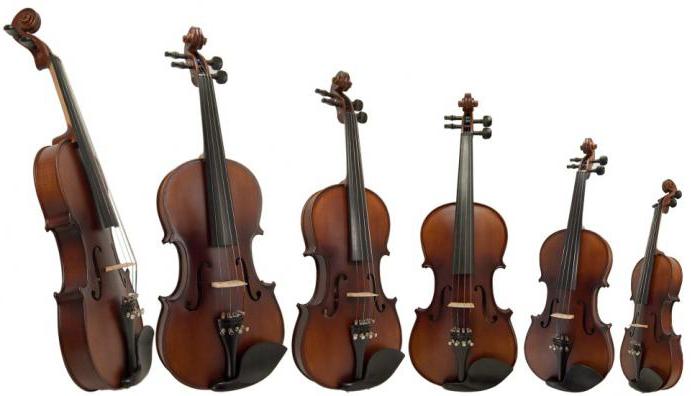
If you already know what a violin is and you are determined to master this instrument, then it is important to know that they come in different sizes. For children, small models are selected - 3/4 or 2/4. For an adult, a standard violin is needed - 4/4. Naturally, you need to start classes under the supervision of an experienced mentor, since it is very difficult to learn on your own. For those who want to try their luck in the independent development of this tool, many textbooks have been created for every taste.
Unique musical instrument
Today you learned what a violin is. It turns out that it is not an archaic relic of the past, on which only classical music can be performed. There are more and more violinists; many groups began to use this instrument in their work. The violin is found in many literary works, especially for children. For example, “Fenina violin” by Kuznetsov, beloved by many children and even their parents. A good violinist can play in any musical genre, from heavy metal to pop music. We can safely say that the violin will exist as long as there is music.